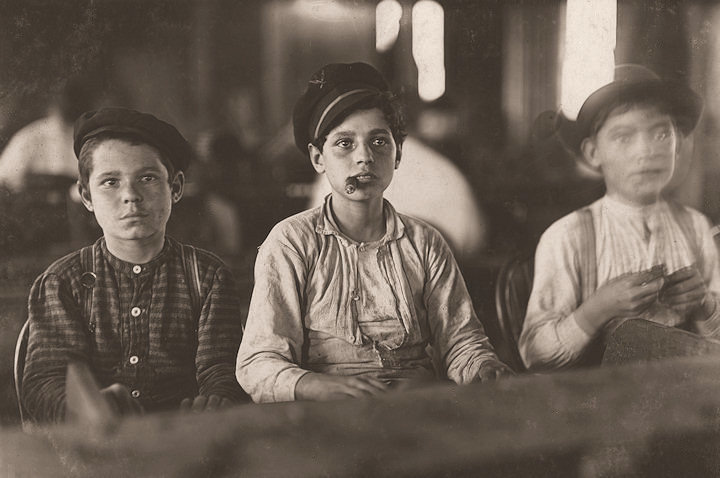This is a picture taken by Lewis W. Hine in Tampa, Florida during the early nineteenth century. Hine, an investigator of National Child Labor Committee exposed pictures of many youngsters who were being exploited as a source of cheap labor. The picture reveals young workers who were all under the age of 14 at the cigar making company. These pictures left a great rermark for the Americans and revealed how rapid industrialization and a lack of regulation left these kids in such a state.




Children in those days not only worked in factories but they also were boot blacks. They also slept in the street, in allies ways and for those who had parents they worked to help out the household. It is sad to see that our great country allowed for this to happen.
Could history repeat itself with all that is going on today?
This document is very interesting, however, it does not show which children were working? For instance, were all children working, poor children or only orphans working?
I can see how children are working as a worker in a factory. However, this document doesn’t show how they were mistreated or how it was deleterious for children.
This picture does not tell us that it was common for children to work. In fact children had always been working, especially on farms. We also do not get a feel of what a work week was like. A work week for a child could be 12 to 18 hour days, 6 days a week. This left no time for them to play or go to school.
The picture also does not tell us of the many efforts made to pass a national child labor law. The Supreme Court actually declared two laws passed by Congress in 1918 and 1922 unconstitutional. Congress also proposed a constitutional amendment but it was not ratified by the states. Finally in 1938, the Fair Labor Standards Act was passed which fixed minimum ages for children to begin working.
Bhaskara, yes. Although I didn’t mention it in the post, the photographer left a comment on this picture saying that the majority of the kids working at the factory became smokers.
I don’t know if my eyes are playing tricks on me, but that baby looks like he’s smoking a cigar.